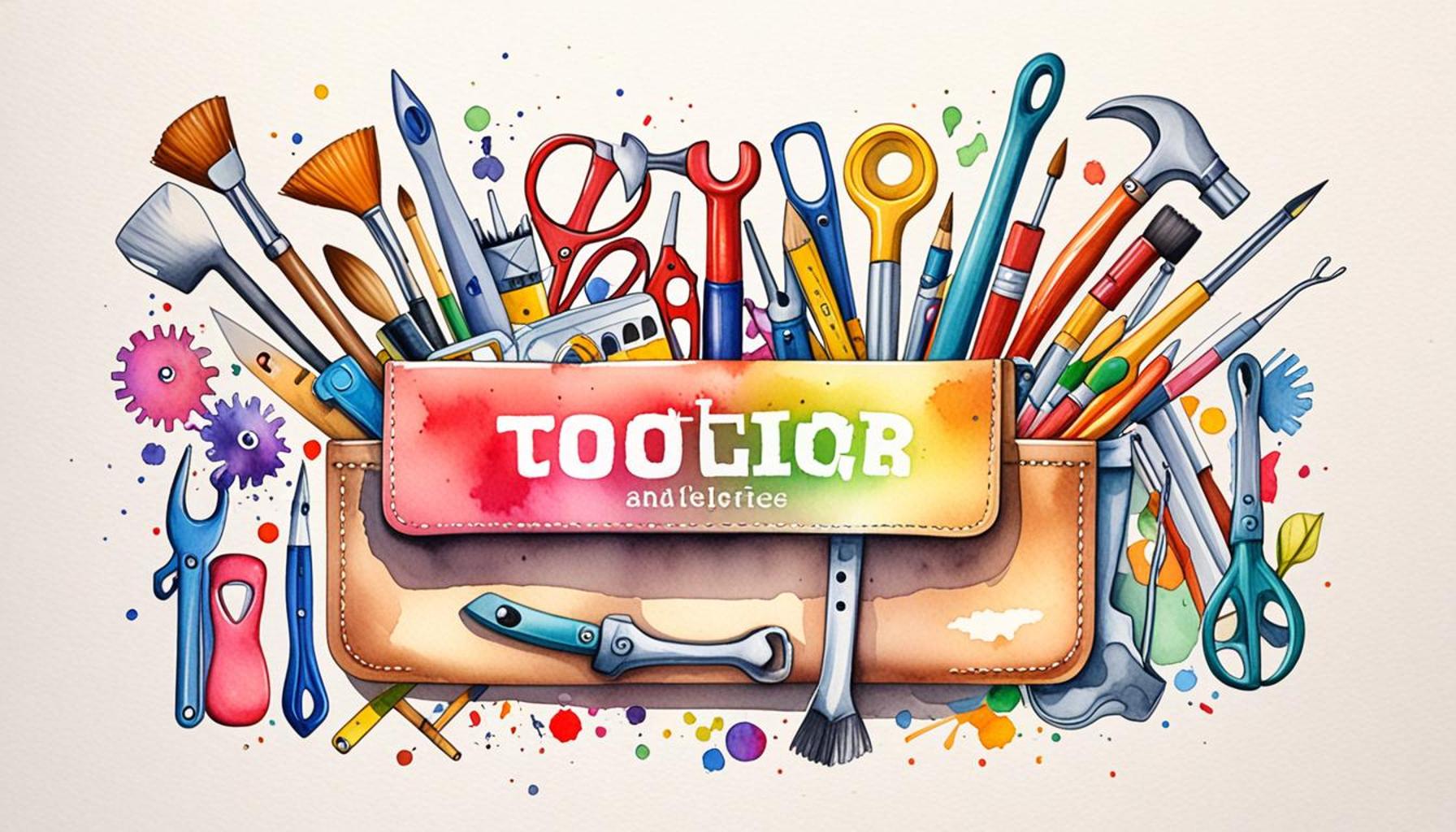How to Involve the Family in Creating a Clutter-Free and Organized Home

Creating a Clutter-Free Home Together
Transforming your home into a clutter-free sanctuary is not simply an individual task; it can be a family affair! Involving family members in this process fosters a sense of teamwork and responsibility, making the journey toward organization rewarding for everyone.
When it comes to decluttering, creating a harmonious atmosphere is just as crucial as the physical space itself. The process can be enlightening, allowing families to share stories and memories tied to the items they are sorting through. Through this collaboration, each family member can express their attachment to certain belongings or recognize the need for change together.
Benefits of Collaborative Decluttering
Consider the multitude of benefits that arise from a collective effort:
- Shared Responsibility: Working together means that everyone plays a role, thus reducing the burden on a single individual. This can alleviate the stress often associated with organizing and help distribute tasks evenly. For example, you can assign specific areas of the house to different family members, allowing each person to take ownership of their designated space.
- Improved Communication: As family members collaborate on decluttering, they engage in conversations about needs, wants, and preferences. This interaction can lead to better understanding and stronger relationships, allowing for healthier communication patterns within the household.
- Life Skills: Children particularly benefit from this experience by learning valuable skills such as organization, decision-making, and discipline. For instance, they might face the choice of keeping a beloved toy or donating it to someone in need. Such decisions foster empathy and critical thinking.
Strategies for a Successful Decluttering Process
Engaging the whole family can lead to sustainable changes in your home environment. To make this process smooth and enjoyable, consider implementing the following strategies:
- Set Clear Goals: Together, define what a clutter-free home looks like. Does it mean having clear countertops, an organized toy closet, or a minimalist living room? Creating a vision board can be an engaging way to visualize your goals as a family.
- Create a Schedule: Dedicate specific times for decluttering sessions. You might choose to set aside an hour every Saturday or schedule a week-long family spring cleaning event. Consistency is key to maintaining momentum.
- Celebrate Successes: Acknowledge and reward efforts to maintain motivation. This could be something as simple as a family movie night after a successful weekend of decluttering or creating a fun ‘before and after’ photo collage to showcase the hard work.
As you embark on this transformative journey with your loved ones, remember that organization is not just about neat spaces. It symbolizes a harmonious and productive family life. By encouraging open dialogue, celebrating achievements, and instilling valuable skills, you will not only create a clutter-free environment but also strengthen the bonds and unity within your household. Embrace this opportunity to foster joy and understanding throughout your home. Let the decluttering adventure begin!

DISCOVER MORE: Click here for stylish decluttering tips
Inclusive Strategies for Decluttering
Involving the family in creating a clutter-free home should be an enriching experience that promotes not only organization but also collaboration. The journey toward achieving an orderly environment involves clear communication and a strategic approach to ensure that everyone feels valued and engaged in the process.
Understanding Family Dynamics
Each family has its unique dynamics and varying levels of attachment to belongings. It is essential to recognize these differences when discussing clutter control. A sense of ownership can empower family members to take responsibility for their spaces and belongings. Begin by holding a family meeting where everyone can express their thoughts on clutter and their personal organization goals.
- Listen and Validate: When discussing belongings, take time to listen to each family member’s sentiments regarding their items. Whether it’s a child’s favorite stuffed animal or a family heirloom, acknowledging their feelings can alleviate resistance to letting go of certain possessions.
- Explore Alternatives: If a family member feels particularly attached to an item they may be willing to consider parting with, suggest alternatives such as taking photos of the items for memory keepsakes or repurposing them creatively.
- Encourage Choice: Empowering family members to make their own decisions about their belongings can lead to greater engagement. Let them choose what to keep, donate, or discard. This autonomy can motivate even the youngest members to actively participate.
Establishing Family Rules for Clutter Management
By setting some ground rules for maintaining an organized home, your family can create a supportive environment that emphasizes ongoing decluttering. Enlist everyone’s input in crafting these norms, as inclusive rule-making is crucial for compliance. Here are some strategies to consider:
- The One In, One Out Rule: Promote this principle where every new item brought into the home must correspondingly reap a similar item. This helps limit the influx of clutter and encourages mindful purchasing.
- Weekly Declutter Day: Designate one day a week for short decluttering sessions. This can involve tackling one area of the home at a time, preventing the process from becoming overwhelming.
- Monthly Challenges: To keep the momentum going, create fun family challenges, such as seeing who can declutter the most items within a month. This can foster friendly competition while lightening the load at home.
By implementing clear communication channels and establishing shared responsibilities within the family, the decluttering process becomes less daunting and more enjoyable. It is essential to recognize that achieving a clutter-free home takes time and patience, but by fostering a collective spirit and addressing individual needs, families can enjoy the rewarding outcomes of their efforts together.
| Category | Key Features |
|---|---|
| Family Involvement | Encourages teamwork and accountability among family members, creating a sense of shared responsibility. |
| Educational Opportunities | Teaches children valuable life skills, including organization, decision-making, and the importance of a tidy space. |
Involving family members in establishing a clutter-free and organized home can transform the living environment into a harmonious sanctuary. One must recognize that family involvement is not just about reducing clutter—it’s about fostering a sense of ownership and team spirit. Allowing children to participate in deciding where items belong encourages them to appreciate their possessions, making it less likely they will add to the clutter. Furthermore, involving the whole family in decluttering efforts enables individuals to discover the benefits of simplicity, cultivating a mindset geared towards mindful consumption.As family members clean and organize together, a unique opportunity arises to impart essential life skills. Children can learn how to prioritize spaces effectively, develop organizational techniques, and make informed decisions about what to keep. Such skills are invaluable, setting the groundwork for responsible adulthood. Additionally, when the family collaborates to maintain tidiness, it establishes routines that benefit everyone’s daily lives.
DIVE DEEPER: Click here for stylish decluttering tips
Creating a Collaborative Decluttering Plan
A successful decluttering journey involves more than just individual efforts; it requires a well-defined collaborative plan that encourages family participation and maintains motivation. By devising a structured approach, you can transform the daunting task of organizing into a shared adventure that not only minimizes mess but also strengthens familial bonds.
Designating Responsibilities
To ensure that decluttering becomes a sustainable practice rather than a one-time event, it’s essential to assign specific roles to each family member. This not only divides the workload but also fosters a sense of accountability. Here’s how to effectively delegate tasks:
- Age-Appropriate Tasks: Assign tasks that suit each family member’s age and capabilities. Younger children can handle sorting toys while older kids may manage their own bedrooms or shared family spaces. This empowers them while teaching responsibility.
- Team Projects: Partner family members together for larger tasks. For example, siblings can work on organizing their joint play area or family members can tackle communal spaces like the living room or garage together. Collaboration often leads to increased motivation.
- Rotating Responsibilities: Establish a plan where responsibilities change weekly or monthly. This can keep the process dynamic and engaging, allowing family members to experience different aspects of maintaining an organized home.
Implementing Effective Organizational Systems
After roles are designated, it is crucial to implement systems that not only keep the home organized but also cater to the unique needs of all family members. A practical and effective organizational system can boost motivation and maintain a clutter-free environment. Here are some strategies:
- Functional Storage Solutions: Utilize bins, baskets, or shelving units that are within easy reach and clearly labeled. Transparent containers allow visibility, promoting easier access and encouraging tidiness. For example, using color-coded bins can make it easier for younger children to identify where their toys belong.
- Daily Routines: Establishing a “five-minute tidy” routine each day can help your family stay organized. Designate a time—perhaps before dinner or bedtime—where everyone spends five minutes putting items back in their designated spaces. This habit allows clutter to be managed daily instead of building up over time.
- Categorizing Items: Encourage family members to categorize their belongings during the decluttering process. Create designated areas for frequently used items, and consider using drawer dividers or organizers to maintain separation and prevent overlap.
Incorporating Fun into the Process
Decluttering doesn’t have to be a mundane chore; infusing fun and creativity into the process can enhance engagement and enjoyment. Here are some ideas to make the experience interactive:
- Themed Declutter Days: Organize themed declutter days, such as “Toy Toss” for children or “Wardrobe Revamp” for adults. Themes can build excitement and provide a fresh perspective on decluttering.
- Reward Systems: Consider establishing a reward system to motivate participation. For instance, a family movie night or a fun outing can be planned once specific decluttering goals are achieved.
- Creative Decoration: Involve family members in decorating clean and organized spaces. Let them choose how to display items they wish to keep or personalize shared areas, fostering pride and ownership.
By creating a collaborative decluttering plan, designating responsibilities, implementing effective systems, and incorporating fun, families can tackle clutter together. This not only cultivates a sense of belonging and accomplishment but also lays the foundation for a more organized and tranquil living space. Engaging the entire family in these practices ensures that a clutter-free environment becomes a lasting reality rather than a temporary goal.
DISCOVER MORE: Click here to dive deeper into a clutter-free lifestyle
Conclusion: Embracing the Journey Towards an Organized Home
Involving the family in creating a clutter-free and organized home is not just about tidying up; it’s a transformative journey that can enhance relationships, teach valuable skills, and foster a sense of achievement. By establishing a collaborative framework, families can successfully tackle the overwhelming task of decluttering and organizing, paving the way for a serene living environment.
The key lies in engagement—from designating responsibilities tailored to each family member’s capabilities to implementing systems that work for everyone. Encouraging participation through fun activities not only makes the process enjoyable but also reinforces teamwork and accountability. By instituting daily routines and creative strategies, families cultivate a culture of organization that persists long after the initial decluttering effort is completed.
Moreover, as families work side by side, the act of sorting through belongings and deciding what to keep fosters open communication and decision-making skills among members. This shared experience not only leads to a more organized home but also strengthens familial bonds and instills a sense of pride in the living environment.
Ultimately, embracing this journey towards organization can be rewarding, teaching families that a clutter-free space is not merely a physical state but a mental and emotional space as well. With these strategies in place, families can build a harmonious home together, where every member contributes to maintaining order and tranquility. It’s time to embark on this collective mission—one small step at a time.


